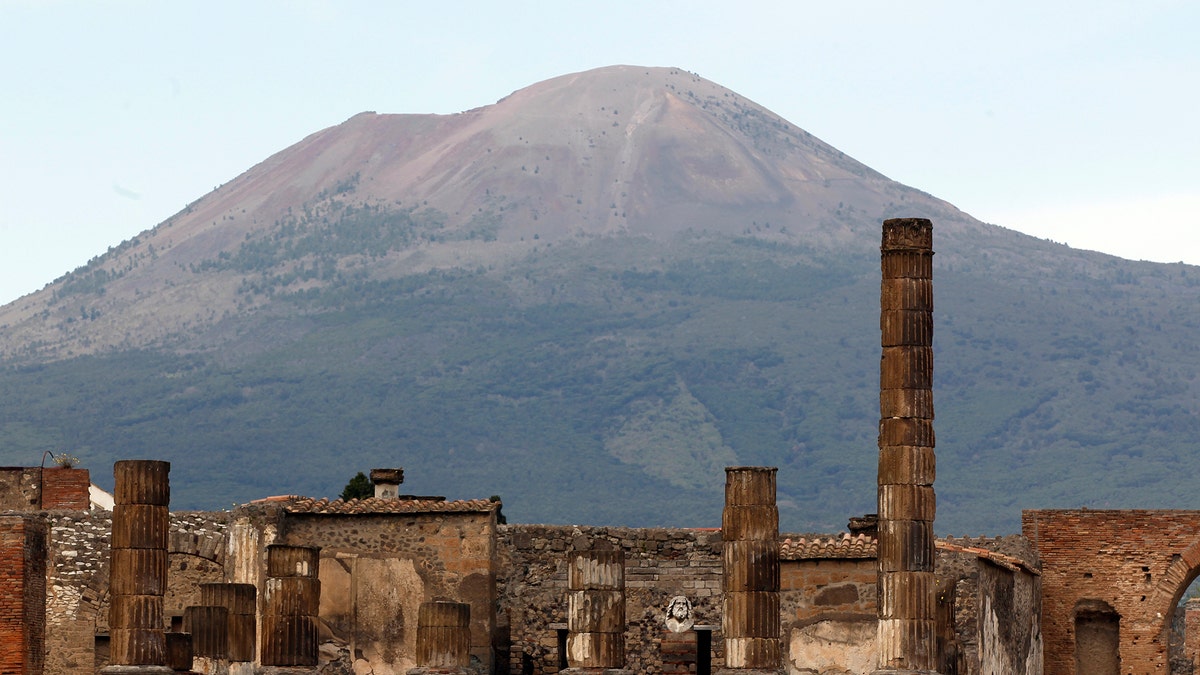
File photo: A partial view of the ancient archaeological site of Pompeii is pictured in front of Mount Vesuvius April 17, 2014. (Credit: REUTERS/Ciro de Luca)
On Aug. 24, 79 A.D. — exactly 1,938 years ago — Mt. Vesuvius erupted in Italy with a thermal energy 100,000 times more powerful than the atomic bombs over Hiroshima and Nagasaki that ended World War II.
Vesuvius shot a cloud of stones, ash and volcanic gas 21 miles into the sky and buried at least 1,000 people (the exact number will never be known) under dozens of feet of lava in the cities of Pompeii and Herculaneum and some outlying villas.
The skeletal remains of the dead, preserved in the molten rock, were not known even to exist until they were discovered by a surveying engineer in the mid-18th century. They have been a source of fascination for archaeologists ever since.
ARCHAEOLOGISTS CALL FIND IN FRANCE A 'REAL LITTLE POMPEII'
Now the skeletons of four more victims — two pregnant women and their newborn or late-term fetuses, discovered among an estimated 50 others in a building in the nearby villa of Oplontis — is generating new interest among scientists. Though half of the skeletons were excavated in 1984 and 1985 and the others were partially uncovered in 1991, it was not until 2017 that the skeletons of the women and their fetuses were fully excavated.
“This summer … I headed a small team that excavated the remaining skeletons and collected osteological data on all of the people who were trapped at Oplontis by the volcano,” Kristina Kilgrove, a bioarchaeologist at the University of West Florida, wrote in Forbes.
“These newly analyzed skeletons from Oplontis are a game-changer in Roman bioarchaeology, since they represent people who all died catastrophically, rather than after an illness," Kilgrove added. "This means that these skeletons give archaeologists a better glimpse into what life was like for people in their prime than do cemetery burials.”
The remains of the women and their fetuses are especially interesting, Kilgore wrote, because “While their biological relationship is not in question, their disease status and diet certainly are.
RARE ROMAN COIN DISCOVERED ON REMOTE SCOTTISH ISLAND
“If the mother suffered from an intestinal parasite or an infectious disease, did that affect the fetus as well? How will the carbon and nitrogen isotopes reflect the mother's diet of food and the fetus's ‘diet’ of maternal nutrition and energy stores?
“For our further research, we hope to answer questions such as these that cannot be solved through study of history and archaeology alone.”
